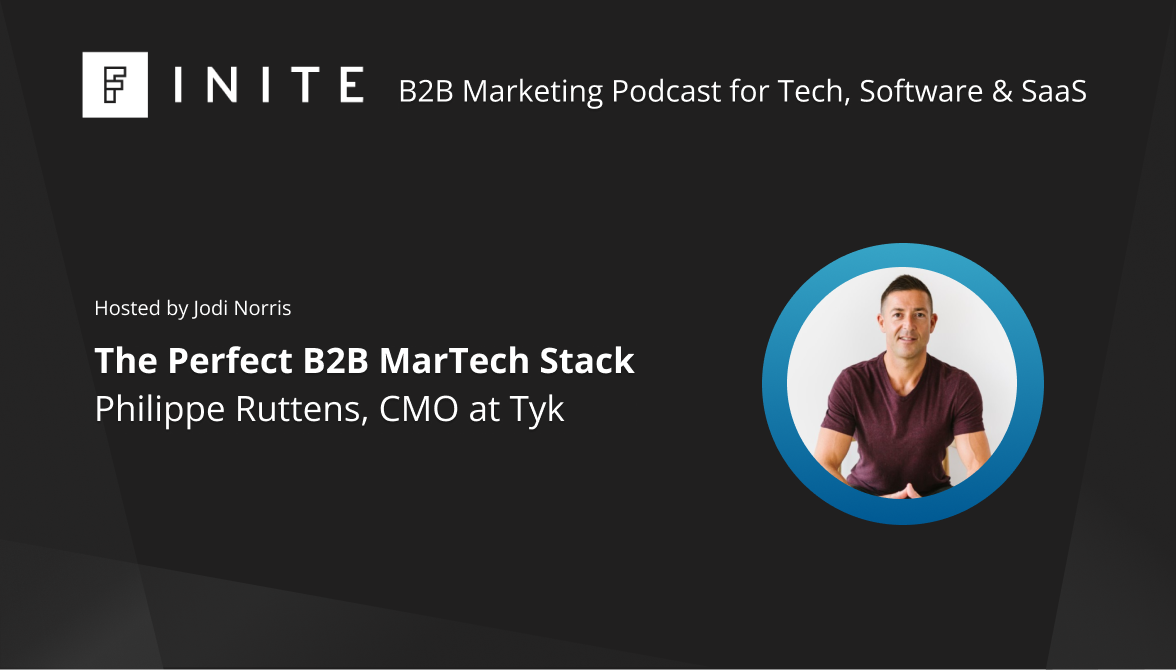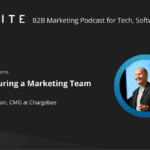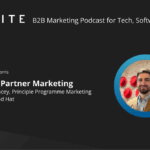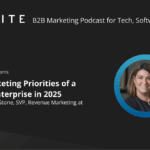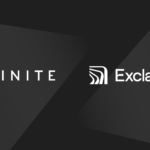Philippe Ruttens has been a FINITE member for years and regular contributor to the Revenue Marketing Alliance & other communities. He is currently CMO at Tyk and B2B revenue marketeer specialising in ROI, ABM, pipeline & team transformation.
Philippe joined Jodi on the FINITE Podcast to share his 30-year B2B learnings & recommendations to help you optimise your MarTech stack. He has written this supplementary article to summarise the episode and help to guide your MarTech decisions further.
You’ll learn:
- Which MarTech tools should you be using in 2025, which should you get rid of?
- How much of your total budget should you set aside for tools?
- How can you distinguish fads from necessities to achieve your performance KPIs and pipeline goals?
For the full episode, watch on YouTube, or listen on Apple Podcasts.
TOOLS OR TOYS?
Tools “R” Us seems to be the common trend these last five years for B2B marketing leaders. Vendors are constantly pushing for new shiny objects, and there has been an explosion of new tools, driven by AI of course.
However, B2B marketing teams and CMOs need to be very careful, often learning from mistakes, about spending more than 20% of their total budget on tools that are not matching their commercial strategy and goals.
Tech stacks should be measured for ROI after the first 6 months, carefully selected via testing & piloting, onboarded, supported with stellar customer service, and adopted from Week 1 by both tools’ admin & users…
At the end of 2024, failing to regiment your tech adoption as such will come back to haunt you. Now is high time to reassess your MarTech stack as you enter 2025 budget & ROI planning mode. For most scale-ups or even enterprises, September and October are perfect times to reevaluate your current stack, challenge vendors on (time to) value delivered, and cancel those contracts before the board & CFO start asking tough questions.
MarTech decisions should be, of course, made case by case depending on your sales & marketing goals, budget size, growth maturity stage and internal teams’ talent & skills.
Source: MarketingProfs
LEVERS & PILLARS
Throughout my experience driving and optimising teams and MarTech strategies, I have experimented with various small and large-budget tools, while learning the key levers needed to provide ROI to the board.
MarTech represents only one of the four key pillars for marketing leaders. In a way, nothing has changed since the 1990s where my employer at the time (Andersen Consulting) used to focus on these four key business dimensions: strategy, technology, processes and people.
While strategy and processes can be seen as the foundation, the people side will make or break your MarTech strategy: I would highly recommend focusing on having/hiring strong data scientist and MarOps talent before purchasing fancy tools.
Of course, small companies can also augment or partly replace the need for such people (due to budget limitations) with a set of selected tools. But nothing will work in a large company without the right talent – set-up, onboarding, adoption.
You can still use simple tools like Google sheets, scrapping “growth hacker mode”, and automate your basic processes with Zapier etc, or even low-cost ABM and demand generation platforms. There’s no need to spend £20-30k on a tool if your organisation isn’t ready for such sophistication… but consider it when growing from Series B stage, again depending on your pipeline & customers expansion needs.
Example tools recommended by Philippe for Tech/SaaS Scale-ups (above £10m)
| CRM / MAP / CMS | HubSpot (Can also include email, ads, social, content distribution) |
| Analytics and Business Intelligence (BI) | Google Analytics, BigQuery, Tableau |
| Reporting | InfiniGrow, Databox (As well as HubSpot and other tools) |
| Customer Data Platform (CDP) | Segment, Tealium to unify customer data from various sources. Also see Census, a composable CDP |
| SEO | SEMrush, Ahrefs, BrightEdge |
| Account Scoring and Segmentation | Forwrd.ai |
| Webinar and Virtual Event Platforms | Zoom |
| On-demand Videos | Wistia or Vidyard |
| Revenue Attribution Reporting | HubSpot or HockeyStack |
GET YOUR FOUNDATION RIGHT FIRST
Having strong RevOps or MarOps in place is again a game changer when developing & optimising your MarTech. Your foundation needs MarTech/Ops governance, strategy, support and training to form the “glue” connecting the dots between the Sales, Marketing, Customer Success and Product teams, as well as the data & reporting operations.
Before MarTech, you need to get “your house in order”: from customer insights, buyer journey data, market & competitive research, value proposition, content & messaging… and, of course, a well-crafted marketing plan, strategy, team structure, campaigns & tactics framework. Then, only then, can you determine better which tools will accelerate your team efficiency (time-to-market, GTM efficiency) and pipeline ROI (volume, conversion, velocity, cost vs return).
Make sure to assess the pros & cons of time vs budget. For example, will a £10k tool save 30% in producing/repurposing content time? Would a revenue attribution platform help your Sales team focus on the top 5% of accounts in market? Will certain dashboard platforms help you engage your Board to save costs and increase ARR every month, proving your team’s value?
Obviously, MarTech can (and should) help you gather insights at speed/scale, especially now with AI, so that your team’s performance accelerates or becomes more predictable.
But tools are just vessels drifting on the B2B sea if you don’t have your strategy, data and content foundation in place – the latter being the fuel to your boat, your vessel, cargo or rocket ship.
Feel free to contact Philippe for any questions or more tips!
Source: GTMNow
